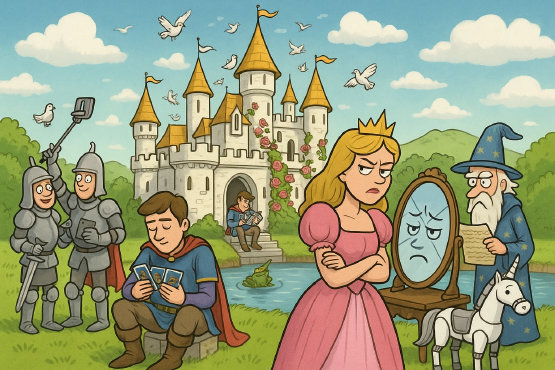Disney, in search of lost magic
Past: The Magic of Emotion and the Essence of Creativity
Disney's early success was not merely a result of technical excellence. Masterpieces like Snow White and the Seven Dwarfs, Mickey Mouse, and Cinderella created timeless resonance based on emotion and imagination. This content appealed not only to children but also to all generations, establishing Disney as a global cultural icon, while the expansion of theme parks and related ventures became a stepping stone to solidify this status. During this period, Disney communicated with the public above all through the emotional keyword of "magic." The purity, love, courage, and hope contained in the stories provided an impact that went beyond mere entertainment, and this was the source of the enduring affection for the Disney brand over many years.
Currently: The Shadow of Repetition and Commercialization
As the 21st century began, Disney faced a wave of change. With the emergence of new competitors, the rise of digital media, and a shift in consumer values, Disney had to pursue both survival and growth simultaneously. Consequently, the company focused on strategies that would reduce risks and maximize profits, such as the live-action adaptation of proven content, franchise expansion, and brand integration. The integration with properties like Star Wars, Marvel, and Pixar brought remarkable short-term results, but soon faced clear limitations. Instead of new emotional experiences, there was a repetition of narratives, content that prioritized commercial goals over emotional depth, and an excessive insertion of political messages, which led to fan fatigue. The live-action project of The Little Mermaid was an attempt to reflect the era's values of diversity and inclusion but received criticism for failing to meet expectations and not capturing the magic of the original.
The essence of the problem: the disappearance of emotion and the dilution of identity
The bigger issue is that Disney's identity is gradually being diluted. Characters and stories should resonate with emotion and memory, but an overly commercialized strategy has reduced them to 'products to be sold.' Consumers want comfort and inspiration through content, but what Disney offers increasingly gives the impression of focusing on brand extension and driving consumption. This signifies a decline in the 'magical sentiment' that the Disney brand once held.
Future: Reimagined through Imagination and Emotion
In order for Disney to re-establish itself as a cultural leader, the following changes are required. First, a return to original content. Instead of merely repeating past successes, it is necessary to create entirely new stories inspired by that spirit. Works that embody cultural diversity and originality, like 'Moana' and 'Coco', provide a good direction. Second, a deep understanding and reflection of global cultures. Content that delicately incorporates the traditions, aesthetics, and myths of various ethnicities and regions can create universal resonance that transcends diversity. This aligns with the brand of Disney, which embraces 'the stories of the world'. Third, the restoration of pure emotion and immersion. The magic that Disney once showcased often stemmed from the sincerity of small emotions rather than grand world-building. It is necessary to delicately revive the threads of emotion once again. Fourth, communication and collaboration with fans. Today's content is completed with consumer participation. An open attitude of listening to fans' voices and expanding narratives together is the way for Disney to return to being 'a home for all generations'.
Conclusion: The Magic of Rebuilding, the Possibility Still Lives
The crisis Disney faces may not solely be the result of failure, but rather the growing pains experienced in the process of adapting to a changing era. What is important is not to forget its essence. Disney still possesses the assets of emotion, creativity, and inclusivity, and if efforts are made to refine and restructure these, the 'Magical Kingdom' can shine again. The advancement of technology and the spread of global culture are, in fact, opening doors to new possibilities. It is hoped that Disney can once again stimulate the imagination of both children and adults, provide inspiration, and transform into a brand that connects the world through storytelling. This is not merely a business strategy but a recovery of a human experience that we can all share, a moment of believing again in the magic called imagination.

Post a Comment